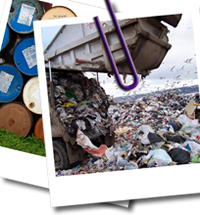
| CHAPTER 7. WASTES |
The management of a large number of chemicals involves environmental and human health risks. Risk is defined as the likelihood of occurrence of accidents derived from handling hazardous wastes during high-risk activities. Accidents may have an impact beyond the boundaries of the facilities where they occur and adversely affect the population, goods and ecosystems. An activity is regarded as high-risk (AAR after its initials in Spanish) when it involves handling any of the chemicals (in an amount equal to or above the limits established) included in the first and second lists of high-risk activities (DOF, 1990 and 1992). Risk assessment involves the determination of the potential scope of accidents and the intensity of adverse effects at varying distances from the accident. Those responsible of conducting high-risk activities must develop and submit to Semarnat an environmental risk assessment study (ERA after its initials in Spanish), aimed at protecting both the society and the environment by foreseeing the potential accidental release of hazardous chemicals in facilities and assessing their potential impact, so that it can be either prevented or mitigated. Between 1992 and 2008, the oil, chemical and gas sectors jointly submitted nearly half of all the ERAs (3 thousand 956 out of a total of 7 thousand 614 studies; Cuadro D3_RESIDUOP02_05). At the state level, Veracruz, Tamaulipas and the State of Mexico jointly submitted 25.3% of all the studies, while Baja California Sur and Nayarit submitted less than 1% each (Map 7.11; Cuadro D3_RESIDUOP02_05). In Veracruz and Tamaulipas, the oil industry was the sector submitting the largest number of ERAs, given that most of the country’s oil production occurs in those states.
|
